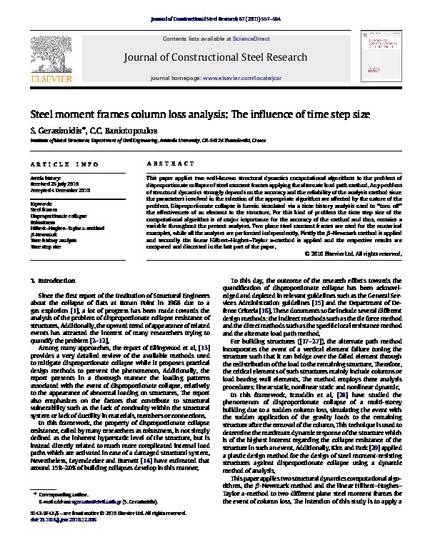
Article
Steel moment frames column loss analysis: The influence of time step size
Journal of constructional Steel Research
(2011)
Abstract
This paper applies two well-known structural dynamics computational algorithms to the problem of
disproportionate collapse of steel moment frames applying the alternate load path method. Any problem of structural dynamics strongly depends on the accuracy and the reliability of the analysis method since the parameters involved in the selection of the appropriate algorithm are affected by the nature of the problem. Disproportionate collapse is herein simulated via a time history analysis used to ‘‘turn off’’ the effectiveness of an element to the structure. For this kind of problem the time step size of the computational algorithm is of major importance for the accuracy of the method and thus, remains a variable throughout the present analyses. Two plane steel moment frames are used for the numerical examples, while all the analyses are performed independently. Firstly the β-Newmark method is applied and secondly the linear Hilbert–Hughes–Taylor a-method is applied and the respective results are compared and discussed in the last part of the paper.
Keywords
- Steel frames,
- Disproportionate collapse,
- Robustness,
- Hilbert–Hughes–Taylor a-method,
- β-Newmark,
- Time history analysis,
- Time step size
Disciplines
Publication Date
Spring April, 2011
Citation Information
Simos Gerasimidis and C. C. Baniotopoulos. "Steel moment frames column loss analysis: The influence of time step size" Journal of constructional Steel Research Vol. 67 Iss. 4 (2011) p. 557 - 564 Available at: http://works.bepress.com/simos-gerasimidis/6/
